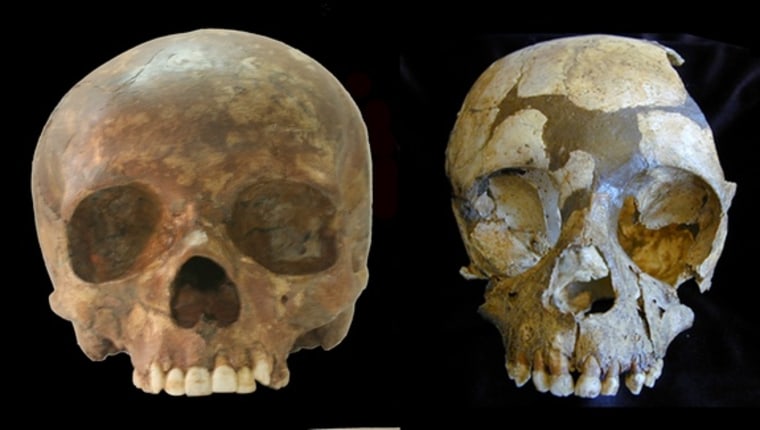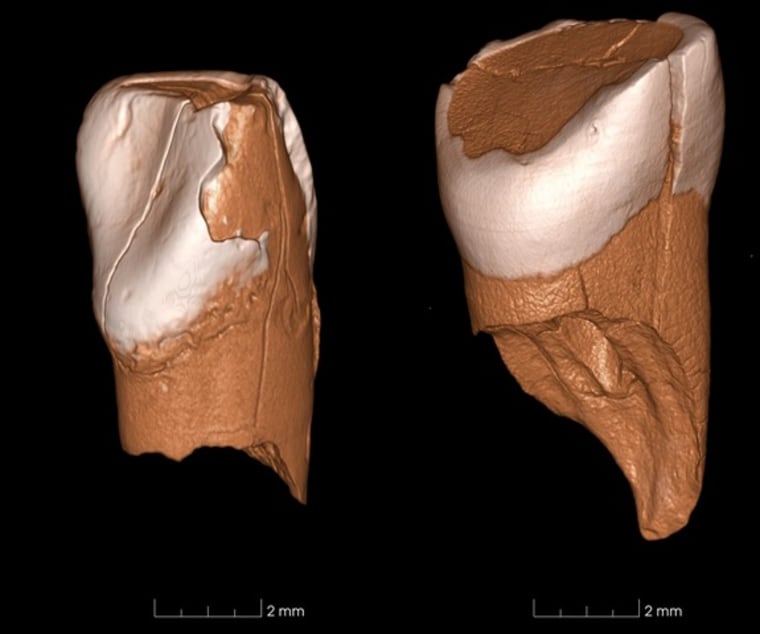Ancient teeth from Italy suggest that the arrival of modern humans in Western Europe coincided with the demise of Neanderthals there, researchers said.
This finding suggests that modern humans may have caused Neanderthals to go extinct, either directly or indirectly, the scientists added.
Neanderthals are the closest extinct relatives of modern humans. Recent findings suggest that Neanderthals, who once lived in Europe and Asia, were related to humans closely enough to interbreed with the ancestors of modern humans. Recent findings suggest that Neanderthals disappeared from Europe between about 41,000 and 39,000 years ago.

Scientists have debated whether Neanderthals were driven into extinction because of modern humans. To solve this mystery, researchers have tried to pinpoint when modern humans entered Western Europe. [Image Gallery: Our Closest Human Ancestor].
The record left behind by the Protoaurignacians, who first appeared in southern Europe about 42,000 years ago, could shed light on the entrance of modern humans into the region. This culture was known for its miniature blades and for simple ornaments made of shells and bones.
The classification of the Protoaurignacians as modern human or Neanderthal has long been uncertain. Fossils recovered from Protoaurignacian sites were not conclusively identified as either. But now scientists report that two 41,000-year-old teeth from two Protoaurignacian sites in Italy belonged to modern humans.
"We finally have proof for the argument that says that modern humans were there when the Neanderthals went extinct in Europe," study lead author Stefano Benazzi, a paleoanthropologist at the University of Bologna in Ravenna, Italy, told LiveScience.
The researchers investigated a lower incisor tooth from Riparo Bombrini, an excavation site in Italy, and found it had relatively thick enamel. Prior research suggested modern human teeth had thicker enamel than those of Neanderthals, perhaps because modern humans were healthier or developed more slowly.

They also compared DNA from an upper incisor tooth found in another site in Italy — Grotta di Fumane — with DNA from contemporary and ancient modern humans, a chimpanzee, Neanderthals, two members of a recently discovered human lineage known as the Denisovans, and one member of an unknown kind of human lineage from Spain. They found that the Protoaurignacian DNA was a match for the modern humans.
Since the Protoaurignacians first appeared in Europe about 42,000 years ago, and the Neanderthals disappeared from Europe between about 41,000 and 39,000 years ago, these new findings suggest that Protoaurignacians "caused, directly or indirectly, the demise of Neanderthals," Benazzi said.
Benazzi said it's not clear how modern humans drove Neanderthals into extinction. Modern humans might have competed with Neanderthals, or they might simply have assimilated Neanderthals into their populations. "The only way we might have proof of how modern humans caused the decline of Neanderthals is if we ever find a modern human burying a knife into the head of a Neanderthal," he joked.
The scientists detailed their findings in a study published online by the journal Science on Thursday.
— Charles Q. Choi, LiveScience
This is a condensed version of a report from LiveScience. Read the full report. Follow LiveScience on Twitter, Facebook and Google+.